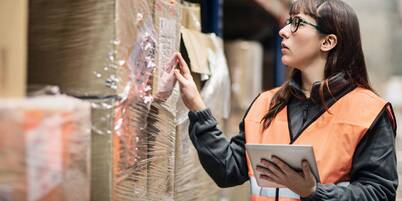
Expert interview: Technology transfer and export controls
The knowledge of how critical goods can be developed is subject to export controls. Dr. Ulrike Jasper offers answers on the subject of technology transfer.

The knowledge of how critical goods can be developed is subject to export controls. Dr. Ulrike Jasper offers answers on the subject of technology transfer.
Abdul Qadeer Khan, regarded as the father of Pakistan’s nuclear weapons program, died on October 10, 2021. He studied in Germany, the Netherlands, and Belgium. At the Physical Dynamics Research Laboratory (FDO) in the Netherlands, he had access to centrifuge designs that later enabled him to build a uranium enrichment facility in Pakistan. In this interview, Dr. Ulrike Jasper explains the role of technology transfer in export control methodology – sharing insights into practice, examples, and references for further study.
Dr. Ulrike Jasper: The Khan case, but also that of the Rabta facility in Libya, show that the interest in export controls extends beyond critical goods to include sensitive technology. Those who acquire the basic knowledge can then produce critical goods by purchasing the necessary components.
Dr. Ulrike Jasper: In export controls, the term items extends beyond goods in the physical sense to also include software and technology developed in connection with those goods. This takes these developments into account.
Dr. Ulrike Jasper: Let’s look specifically at the EU’s dual-use list: Under 3A225, for example, we find frequency changers or generators with certain characteristics. Letter A of the dual-use item number cites goods in the form of systems, equipment, and components. Letter D names software for the listed goods. Following the same pattern, 3D225 lists software specially designed to enhance or release the performance of a frequency changer or generator, and 3E225 lists the associated technology in the form of codes or keys.
Dr. Ulrike Jasper: In the definitions of Annex 1 of the EU Dual-Use Regulation 2021/821, technology is defined as “specific information necessary for the development, production, or use of goods.” This knowledge is transferred in the form of “technical data” or “technical assistance.”
Dr. Ulrike Jasper: Technical assistance is defined in Art. 2 No. 9 of the EU Dual-Use Regulation as “any technical support related to repairs, development, manufacture, assembly, testing, maintenance, or any other technical service.” It can take forms such as instruction, advice, training, transmission of working knowledge or skills, or consulting services, including by electronic means as well as by telephone or any other verbal forms of assistance.

Dr. Ulrike Jasper is an attorney who has advised AEB SE for over 10 years on issues of export control and sanctions law. In addition to providing expert support to AEB customers and helping to address issues of export control law within the company, Ulrike Jasper is also active as a presenter on European and US export control and sanctions law at various professional development institutions. She has previously published numerous articles on these topics in professional journals and AEB’s online magazine.
The European Commission just published its “Recommendation (EU) 2021/1700 of 15 September 2021” on September 23, 2021. This Recommendation addresses “internal compliance programmes for controls of research involving dual-use items under Regulation (EU) 2021/821 of the European Parliament and of the Council setting up a Union regime for the control of exports, brokering, technical assistance, transit, and transfer of dual-use items.” Chapter 2.3.4 provides comprehensive information around “technology controls” and the associated controlled transfer of technology.

Export Controls from AEB automatically checks all your relevant transactions for license requirements and embargo restrictions worldwide. Ad hoc, fully automated, or company-specific. In the cloud or integrated in your ERP.